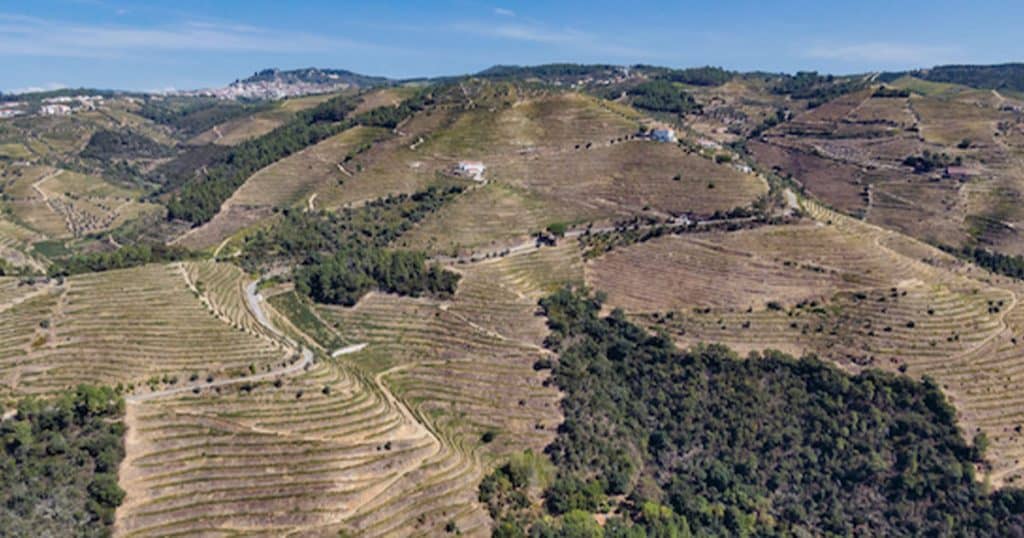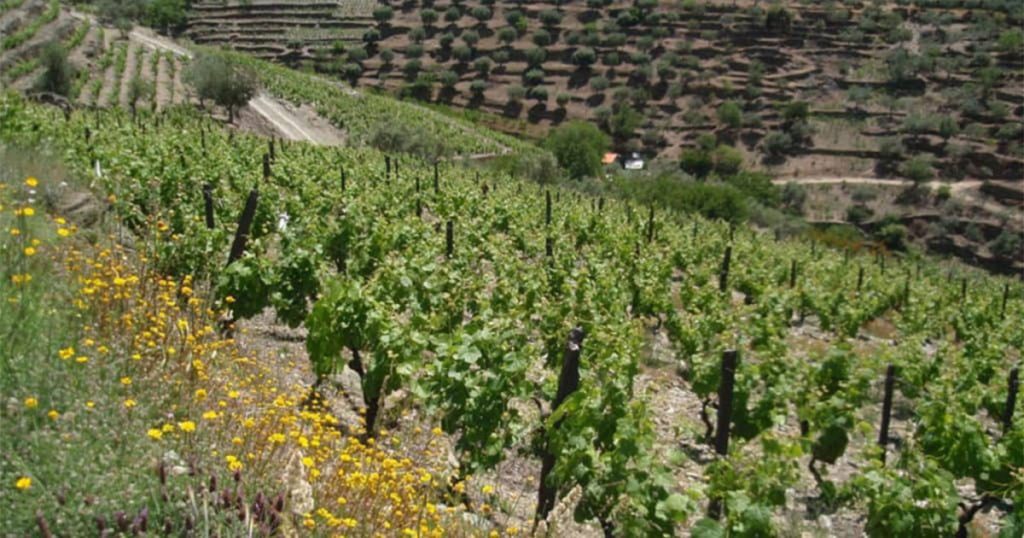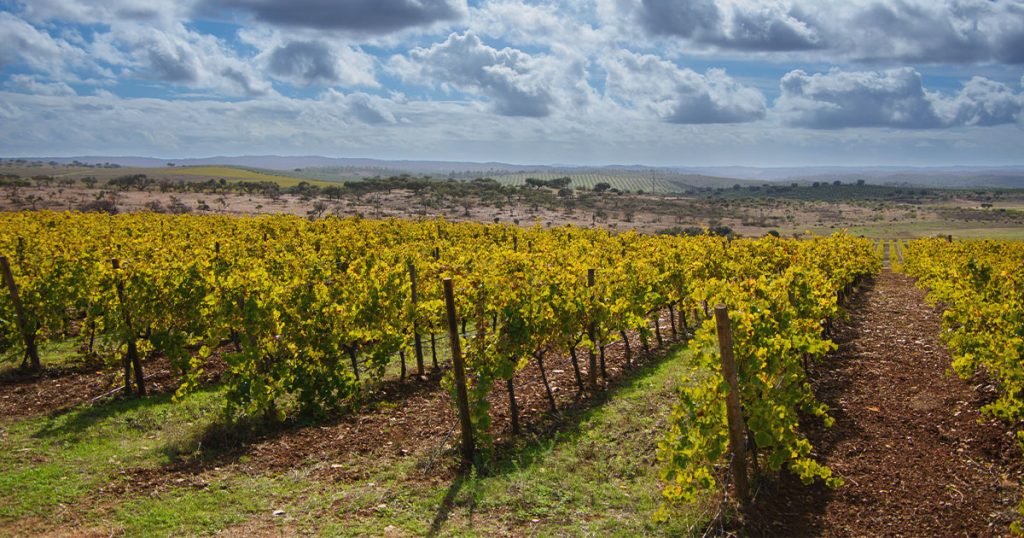Despite a modest uptick in popularity recently, Portugal is a relatively undervalued and underappreciated category in the wine world. For those looking for interesting, expressive and distinct wines that punch well above their price point, Portugual is worth your attention! The county is in the throes of a vinous revolution, with a quality-focused generation of young winemakers leading the way. Dig a little and you’ll find exceptional wines throughout its many regions and styles.
Much of Portugal’s long and rich wine history has centred around Port — the famed fortified wine from the Douro Valley — while the country’s dry white and red wines from indigenous grapes have received little to no recognition outside of its borders. There are approximately 250 native Portuguese grapes and more autochthonous white grape varieties per hectare than any other wine country in the world. This diversity can be attributed to the stark climatic contrasts between the country’s different growing regions. From the maritime-influenced coastal plains, to the hot, arid regions inland, there is a broad range of micro-climates producing wines with varying weights, textures and fruit profiles. Here are a few white wine growing regions worth exploring before summer’s end.

Vinho Verde is the most well-known Portuguese white wine. This ‘Green Wine’ is not, in fact, a grape but a region, Portugal’s largest. Located in the country’s extreme northwest corner, its climate is cool and wet. VInho Verde is typically a blend of several grapes, predominantly Alvarinho (Albariño in Spain), Loureiro, Arinto and Trajadura. It was traditionally made in a light, slightly sparkling style and meant to be enjoyed in its youth. Today, it is made in a variety of styles ranging from the traditional light, spritzy wines of the past to powerful, exotic and age-worthy examples that demand attention and, sometimes, premium price points. Most of what is exported these days is serious, still and dry.

Southeast from Vinho Verde, you’ll find the Douro Valley. While known mostly for Port and red wines, it also produces delicious and beguiling whites. During much of the growing season, the temperatures in the low lying vineyard terraces that line the Douro River regularly reach in excess of 30 ℃. It is here that you’ll find exclusively red grapes that can withstand these extreme temperatures to create full, rich, fortified wines. But travel up onto the plateaus and you’ll discover an array of interesting white grapes capable of making exceptional wines. They’re almost always blends, the best examples offering up rich, textured wines with ripe fruit and streaks of minerality. Elevated vineyards and strict temperature-controlled fermentation ensure that there’s plenty of refreshing, balancing acidity. The key white grape varieties here are Gouveio, Rabigato, Viosinho and Malvasia.

Staying in the interior and travelling south, you’ll find the Dão region, notable for its ability to make exceptional, age-worthy reds, primarily from the grape Touriga Nacional. This is a region with vast potential given its bountiful natural vinous resources: a long, warm growing season, well-draining soils and cascading mountains that protect it from the Atlantic. Though 80% of wines here are red, white wines have gained increasing attention, particularly those made with a good proportion of Encruzado. Encruzado is grown almost exclusively in Dão and is widely considered among the finest grapes in Portugal, capable of making weighty, flavourful wines with notes of tropical fruit, hazelnut and minerality. Some have compared it favourably to very ripe White Burgundy.

Farther south still, we find the large, sparsely populated region of Alentejo, historically known more for its production of cork than fine wine. In stark contrast to Dão, this is an area not well suited for viticulture. The growing season is exceedingly hot, sunny and dry, making irrigation in the field and temperature-control in the cellar a necessity. Site-selection and vineyard management are critical here in order to preserve freshness and acidity in the wines. The varietal star of the region for white grapes is Antão Vaz. Its bountiful tropical fruit character, moderately high acidity and fondness for oak combine to make the region’s most compelling and delicious wines. You’ll also find varying amounts of Arinto, Roupeiro and others blended in throughout the region. The Alentejo has received a significant influx of capital over the past two decades, most of it from outsiders who see large amounts of reasonably priced land capable of making quality wine.
The red wines of Portugal offer up just as much, if not more, variety and value than their white counterparts. At their best, Portuguese reds possess a freshness and elegance that bely their intensity, weight and concentration. Most of the country’s red grape growing regions have warm, Mediterranean climates, though coastal areas continue to gain importance given changing weather patterns. The best winemakers, often with the best sites, are able to coax balance and brightness from the sometimes hostile, warm climatic conditions. These wines are the perfect accompaniment to summer BBQs and cottage weekends. Here are a few regions you should have no difficulty finding throughout Ontario.
Increasingly, the same grapes used to produce Port in the Douro Valley are being used to make dry, complex red wines with lots of colour and character. The main grapes are familiar to some, especially Port drinkers: Touriga Nacional, Touriga Franca and Tinto Roriz (Tempranillo in Spain). The wines tend to be full-bodied, fairly tannic and capable of aging decades in the cellar. The younger generation of Douro winemakers are focused on crafting red wines that are easier to enjoy in their youth, with lower levels of tannin and oak.
Dão red wines are often made from the same grapes as those from the Douro, with the notable addition of Jaen (Mencia in Spain). The region has wonderful soils and topography for grape growing and some refer to it as the ‘Burgundy of Portugal’. In contrast to what you find from the Douro, Dão red wines are subtle, elegant and incredibly food-friendly. Plenty of winter rainfall and higher altitudes help grapes retain more natural acidity here. There has been a significant influx of investment in the region and the long-held belief that this region produced only simple, rustic wines no longer holds true.
Lisbao is considered by many to be the country’s most exciting and dynamic wine region, spanning the country’s Atlantic coast from Lisbon north to Leiria. Reds are almost always blends, from the usual suspects Touriga Nacional and Aragones, as well as from international favourites like Cabernet and Syrah. Ocean winds and moderate rainfall set the stage for terroir-driven wines with freshness and ‘drinkability’. Most of these wines are consumed by the local Lisbon population and tourists. Most are light and quaffable, However, what is being exported is anything but! For the best examples, look for sub-regions Alenquer and Arruda.
Portuguese wines are one of the absolute best values in the world of wine. From Vinho Verde in the north, to Algarve in the south and everything in between, the curious and adventurous wine enthusiast will find wines with uniqueness, character and versatility, at very affordable prices!

